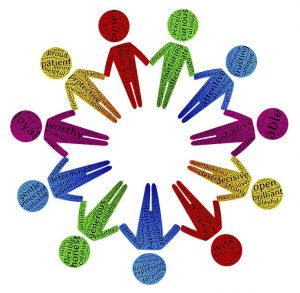Diversity is not just the range of human differences, but acknowledging, understanding, accepting, and valuing differences among people including, but not limited to, race, ethnicity, gender, gender identity, sexual orientation, age, social class, physical ability or attributes, religious or ethical values system, national origin, and political beliefs. Diversity and Inclusion programs are developed in the workplace to ensure that people of all types are included at all levels of the organization and can draw on each other’s strengths and experiences.
The world’s increasing globalization requires more interaction among people from diverse backgrounds. People no longer live and work in an insular environment; they are now part of a worldwide economy competing within a global framework. For this reason, organizations need to become more diversified to remain competitive. Maximizing and capitalizing on workplace diversity is an important issue for management.
Managers need to recognize the ways in which the workplace is changing and evolving. Managing diversity is a significant organizational challenge, so managerial skills must adapt to accommodate a multicultural work environment.
Effective managers are aware that certain skills are necessary for creating a successful, thriving, diverse workforce.
First, managers must understand discrimination and its consequences.
Before we can truly embrace a diverse workforce, managers must understand that discrimination hurts us all, not just the person who is of a different ethnicity, but those who have to witness it. It creates a divide in the workplace and is counter to the desire to collaborate.
Second, managers must recognize their own cultural biases and prejudices.
Each individual is unique and does not represent or speak for a particular group. When creating a successful diverse workforce, an effective manager should focus on personal awareness. Both managers and employees need to be aware of their personal biases. Therefore, organizations need to develop, implement, and maintain ongoing training because a one-day session of training will not change people’s behaviors.
Finally, managers must be willing to change the organization if necessary.
Organizations need to learn how to manage diversity in the workplace to be successful in the future. When dealing with diversity, managers must promote a safe place for associates to communicate. Social gatherings and business meetings, where every member must listen and have the chance to speak, are good ways to create dialogues. Managers should implement policies such as mentoring programs to provide employees access to information and opportunities. Also, employees should never be denied necessary, constructive, critical feedback for learning about mistakes and successes, due to concerns about a person’s differences.
Managing diversity is about more than equal employment opportunity and affirmative action. Is it about embracing each of our unique differences.







